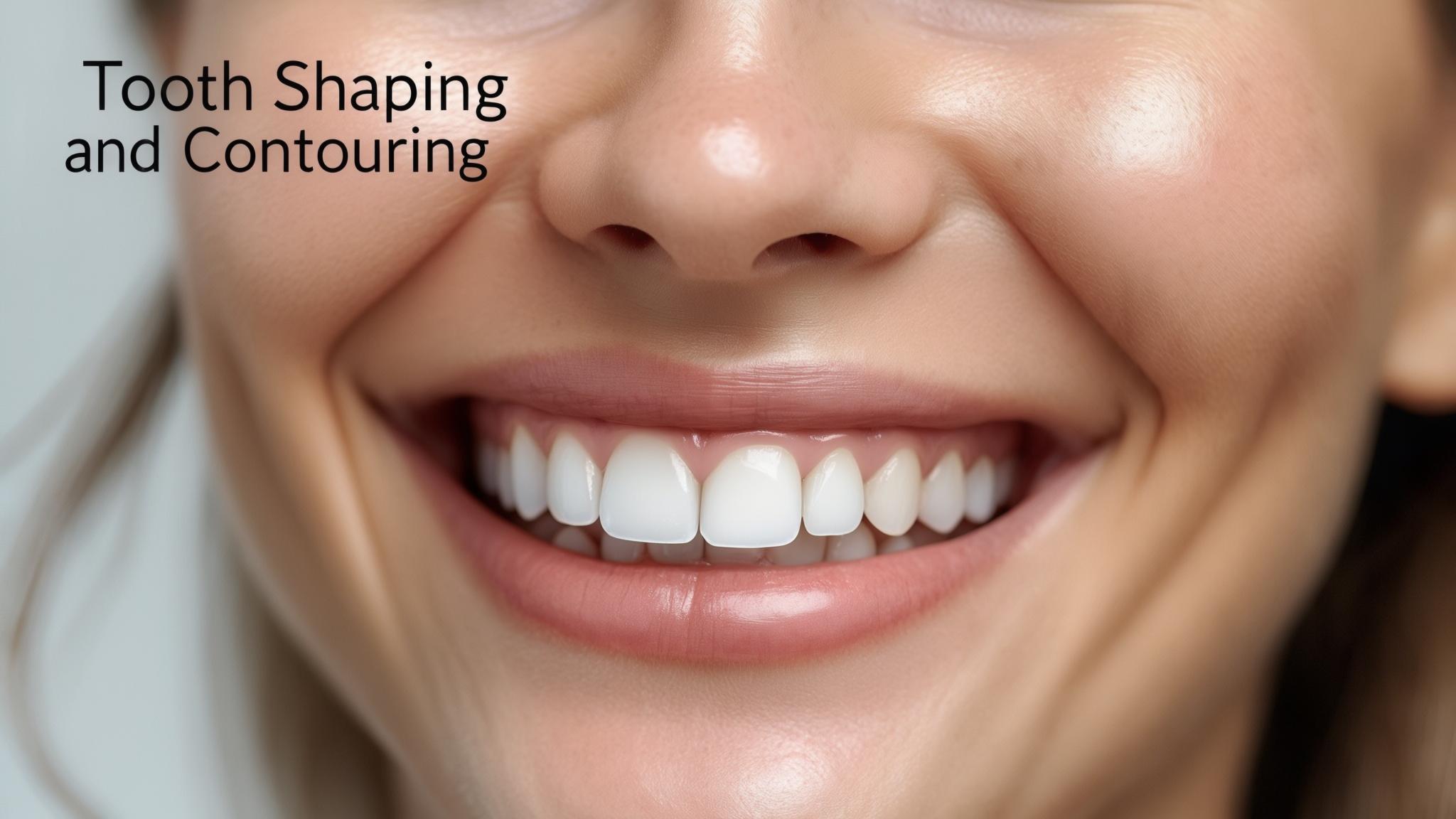Introduction
Cosmetic dentistry is a branch of dental care focused on improving the appearance of your teeth, gums, and smile. Among the various procedures available, tooth shaping and contouring stand out as simple yet effective methods to enhance your smile. These techniques are designed to subtly reshape your teeth, creating a more harmonious and aesthetically pleasing appearance. In today's world, where a smile can make a significant impact, the importance of aesthetics in dental health cannot be overstated.
Understanding Tooth Shaping and Contouring
Explanation of Tooth Shaping
Tooth shaping, also known as enameloplasty, involves removing small amounts of enamel to change the shape, length, or surface of a tooth. The purpose is to correct minor imperfections such as uneven edges or small overlaps. Techniques used include sanding instruments and lasers, which allow for precise and controlled removal of enamel.
Explanation of Tooth Contouring
Tooth contouring, often paired with shaping, involves smoothing out the tooth’s surface to enhance its appearance. This process can address issues like chips, irregular shapes, and surface texture. Techniques such as fine diamond burs and sanding discs are employed to achieve the desired look.
Differences Between Shaping and Contouring
While both procedures aim to improve the appearance of teeth, shaping typically involves altering the tooth’s structure, whereas contouring focuses on refining the surface. Together, they create a more balanced and attractive smile.
Benefits of Tooth Shaping and Contouring
Improved Aesthetics
One of the primary benefits is the enhancement of dental symmetry, leading to a more natural and appealing look. By addressing minor imperfections, these procedures contribute to a smile that looks and feels more harmonious.
Functional Benefits
Beyond aesthetics, shaping and contouring can improve your bite and alignment, reducing wear on teeth over time. This not only preserves your dental health but also enhances the function of your teeth.
Psychological Impact
The boost in self-confidence from having a more attractive smile can be profound. Improved aesthetics often lead to positive effects on social interactions and overall well-being.
The Procedure
Initial Consultation
The process begins with an initial consultation, where your dentist assesses your dental health and discusses your goals and expectations. This step ensures that the procedure aligns with your needs.
Detailed Examination
A thorough examination, including X-rays and imaging, helps identify areas for improvement. This detailed assessment guides the shaping and contouring process.
The Shaping Process
Using specialized tools and materials, your dentist carefully removes enamel to reshape your teeth. This step-by-step procedure is precise, ensuring minimal discomfort and optimal results.
The Contouring Process
Contouring involves smoothing and polishing the teeth. Techniques employed are gentle and efficient, with the entire procedure typically lasting a single visit.
Post-Procedure Care
After the procedure, your dentist will provide instructions for recovery and schedule follow-up appointments to monitor your progress and ensure satisfaction with the results.
Who is a Candidate?
Ideal Candidates for Tooth Shaping and Contouring
These procedures are ideal for individuals with minor dental imperfections who desire a more refined smile. Age is not a strict barrier, but considerations differ for younger and older patients.
Considerations for Different Age Groups
While adults often seek these enhancements for cosmetic reasons, younger patients may benefit from correcting developmental imperfections.
Situations Where Shaping and Contouring May Not Be Suitable
In cases of severe dental issues or significant enamel loss, these procedures may not be appropriate. A qualified dentist will evaluate your suitability.
Risks and Considerations
Potential Risks Involved
While generally safe, there are potential risks, such as increased sensitivity or over-contouring, which can affect tooth structure.
Importance of Choosing a Qualified Professional
Choosing an experienced dentist minimizes risks and ensures that the procedure is performed correctly, enhancing your smile safely.
Understanding Limitations of the Procedure
It’s crucial to understand that while shaping and contouring can significantly enhance your smile, they have limitations and may not address all dental issues.
Cost of Tooth Shaping and Contouring
Factors Influencing Cost
The cost varies based on factors such as geographic location and the dentist’s experience and reputation.
Average Cost Range
Typically, the cost ranges from $50 to $300 per tooth, making it an affordable option compared to other cosmetic procedures.
Insurance Coverage and Financing Options
While not always covered by insurance, many dental practices offer financing options to make the procedure accessible.
Conclusion
Tooth shaping and contouring offer a straightforward way to enhance your smile and boost your confidence. By seeking professional advice, you can explore these simple enhancements and achieve the smile you’ve always wanted.
References
- American Dental Association: www.ada.org
- Journal of Cosmetic Dentistry
- Testimonials from patients who have undergone tooth shaping and contouring

